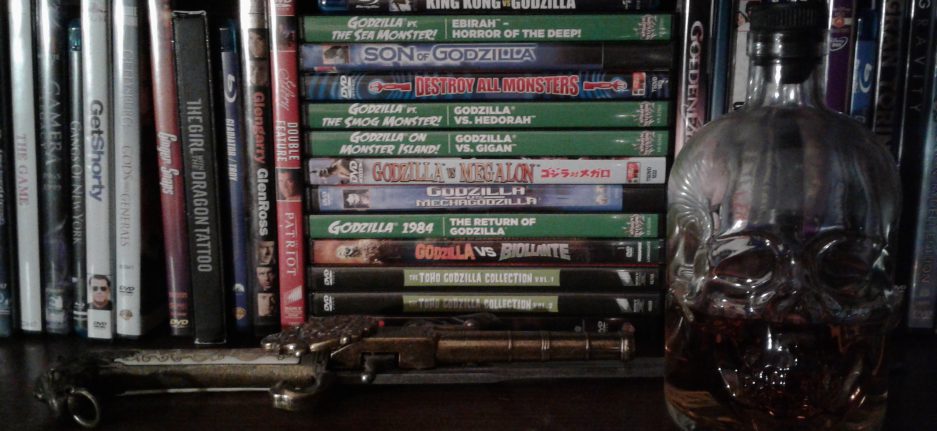I should have known better. I really should have. Given my experience with director Yorgos Lanthimos, it should have been so very clear: I hated The Lobster, finding it too wooden and archaically twee to be either funny, thought-provoking, or even entertaining, and I was immensely frustrated by The Killing of the Sacred Deer, mostly for the even more wooden performances but also for some of the turns the plot took (I swear, the wife almost made me strike my screen). When trailers surfaced for The Favourite, my interest was immediately piqued, with the oddball framing of the narrative and the prospect of some strong performances from Emma Stone and Rachel Weisz fueling things the most. Then the marketing showed it was a Lanthimos production, and I started to question my interest. I soldiered on, though. Why do I do this to myself? You never know, thought I, maybe things will somehow change here.

Rather than the contemporary surroundings Lanthimos utilized in his previous outings, we’re swept away to the early decades of the eighteenth century, where we watch as Great Britain putters through the waning years of the Stuart dynasty and conducts operations in the War of the Spanish Succession. The central conflict, though, is slightly more compact than a continent-spanning war: We bear witness to the internal struggle for influence between cousins Sarah (Duchess of Marlborough) and Abigail over the attention of Queen Anne. There is quite a bit at stake here, not just for the women themselves, as decisions of state are often either handled fairly directly by the favored or are heavily influenced thereby through counsel with the queen. Plenty of claws and barbs are exchanged, as one might imagine.
That certain aspects of the film I was looking forward to made themselves apparent was clear from the start. For one thing, the central trio of Stone, Weisz, and Olivia Colman (Abigail, Sarah, and Anne, respectively) are spectacular here, not only breathing properly idiosyncratic life to their characters, but fleshing them out in the most naturalistic manner I’ve yet seen from a Lanthimos joint. The costume work from Sandy Powell (who’s won Oscars for her stunning work in The Young Victoria, The Aviator, and Shakespeare in Love and who provided the best aspect of Dinsney’s recent Cinderella remake) is superb, crafting some intricate gown designs as well as some billowy coats. (Weisz’s shooting outfit was a particular standout for me.) The script from Deborah Davis and Tony McNamara provides ample opportunities for both parlor sniping and intimate character-building. Robbie Ryan’s cinematography is often a sight to behold, with excellent use of natural lighting (I swear, there are shots involving candlelight in an otherwise dark room that create better chiaroscuro than any Caravaggio painting) and wide lenses that both allow the surrounding architecture to sprawl and simultaneously compact the characters’ presences therewithin.
But it’s with the cinematography that my distaste for the film truly begins. Alongside stunning visuals, there’s ample use of fish-eye lenses, likely adding to the sense of character isolation as well as creating something of a confusing, ethereal feel, getting into these characters’ headspaces. While I vaguely understand the use of these lenses, the effect isn’t quite what Ryan and Lanthimos likely had in mind: Sparse use could have worked, but the incessant use of these fish-eye lenses got rather trying on the eyes fairly quickly. This isn’t a four-minute music video here, this is a two-hour-long film, and distorting lenses like these, when used so often, drains the visuals of any heft such a shift in visualization should bring. There are strange pans, pivots, and gimbals from one line of sight to another that don’t seem to serve much purpose, though they do invoke the sense of security camera watching the action, much like an episode of Big Brother, but in all of the worst ways. Some quick editing occasionally seeks to add to the quirky humor on display, but it often reeks of the director applying a highlighter to bits that don’t require any such augmentation. Though a great performance, the way Colman’s Anne is written and portrayed is cartoonishly strident and infantile, somehow exaggerating even the most vehement criticisms I’ve read of the famously capricious monarch and making me wonder why anyone would even bother courting her favor and presence, regardless of the power and influence such a situation would bring. There are limits to my suspension of disbelief.
It’s because of these factors that I could never fully become invested in the film. The acting and cinematography are wasted and undercut by Lanthimos’ apparently characteristic drive to alienate the audience from the narrative. This isn’t Brecht, though, I have no desire to think any deeper on the themes on display, but rather I just want to turn away and end my annoyance. Something tells me this would have been a stunning artistic achievement if placed in different hands, though it’s difficult to say how the other aspects would be affected by such a change. All I know is that there is a lot to like about The Favourite, but there’s also a lot that desperately wants me to watch something else.

Totally agree. Cannot understand the positive reviews. A sad waste of 3 excellent actresses.
LikeLike